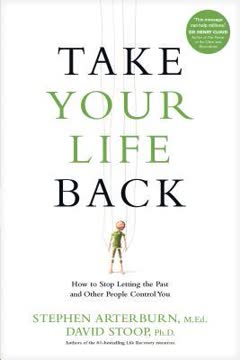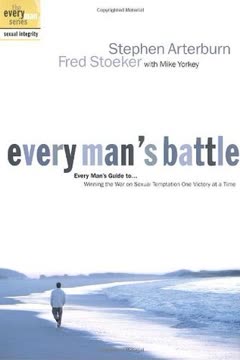Key Takeaways
1. Recognize and overcome reactive living
Reactive living eventually puts us in a state of learned helplessness.
Understanding reactive living. Reactive living is a state where we automatically respond to life's challenges based on past hurts and fears, rather than making conscious choices. This pattern often develops as a coping mechanism in response to childhood wounding, trauma, or dysfunctional relationships. Common signs of reactive living include:
- Denial or minimization of problems
- Compliance with unhealthy demands
- Excessive people-pleasing
- Self-deception and making excuses
- Enabling destructive behaviors in others
- Attempting to control situations or people
Breaking free from reactivity. To overcome reactive living, we must first become aware of our patterns and their origins. This involves honest self-reflection and a willingness to confront uncomfortable truths about ourselves and our past. By developing self-awareness and learning healthier coping strategies, we can gradually shift from reactive to responsive living, making conscious choices aligned with our true selves and values.
2. Understand the impact of childhood wounding
We all are sinful human beings raised by other sinful human beings, and we all fall short in some way.
The universality of wounding. Every person experiences some degree of wounding during childhood, as no parent or caregiver is perfect. These wounds can stem from various sources, including neglect, abuse, inconsistent parenting, or traumatic events. Understanding the impact of these early experiences is crucial for healing and personal growth.
Types of childhood wounds:
- Emotional neglect or abuse
- Physical or sexual abuse
- Inconsistent or unpredictable parenting
- Traumatic events or losses
- Excessive criticism or unrealistic expectations
Long-term effects. Childhood wounding can profoundly impact our adult lives, influencing our self-perception, relationships, and overall well-being. Recognizing these wounds and their effects is the first step toward healing and reclaiming our authentic selves. Through self-compassion, therapy, and intentional personal growth, we can begin to address and heal these early wounds, leading to more fulfilling and healthy lives.
3. Identify and heal from insecure attachments
All three elements—availability, responsiveness, and acceptance—are necessary to form healthy, secure attachments.
Understanding attachment styles. Our early relationships with caregivers shape our attachment style, influencing how we form and maintain relationships throughout our lives. Insecure attachments can lead to difficulties in forming healthy connections and may contribute to codependent behaviors.
Main attachment styles:
- Secure: Able to form healthy, balanced relationships
- Anxious: Fear of abandonment, often clingy or needy
- Avoidant: Fear of intimacy, emotionally distant
- Disorganized: Inconsistent behavior, often stemming from trauma
Healing insecure attachments. Recognizing our attachment style is the first step toward healing. This process involves developing self-awareness, working through past hurts, and learning to form healthier relationships. Therapy, particularly attachment-focused approaches, can be instrumental in this healing journey. By cultivating secure attachments, we can experience more fulfilling relationships and a stronger sense of self.
4. Confront and overcome toxic shame
Toxic shame undermines our will and our power to stand up for ourselves.
The destructive power of shame. Toxic shame goes beyond healthy guilt for wrongdoing; it's a pervasive belief that we are fundamentally flawed or unworthy. This shame can stem from childhood experiences, trauma, or societal messages. It often leads to self-destructive behaviors, relationship difficulties, and a distorted self-image.
Overcoming toxic shame:
- Recognize shame-based thoughts and beliefs
- Practice self-compassion and self-acceptance
- Challenge negative self-talk with positive affirmations
- Share your struggles with trusted others
- Seek professional help if needed
By confronting and healing from toxic shame, we can reclaim our self-worth and live more authentically. This process involves replacing shame-based beliefs with self-compassion and developing a more balanced, realistic self-perception.
5. Address the effects of trauma on your life
Trauma causes people to do things they never would have done if the trauma hadn't happened.
Understanding trauma's impact. Trauma can profoundly affect our thoughts, emotions, and behaviors, often in ways we don't fully recognize. It can lead to hypervigilance, emotional numbing, relationship difficulties, and various mental health challenges. Acknowledging the effects of trauma is crucial for healing and personal growth.
Signs of unresolved trauma:
- Intrusive thoughts or flashbacks
- Avoidance of trauma-related triggers
- Heightened anxiety or irritability
- Difficulty trusting others
- Emotional numbness or disconnection
Healing from trauma. Recovery from trauma often involves professional help, such as trauma-focused therapy. Techniques like EMDR, cognitive-behavioral therapy, and somatic experiencing can be effective in processing traumatic experiences. Additionally, developing healthy coping mechanisms, practicing self-care, and building a support network are essential components of trauma recovery.
6. Rediscover and embrace your authentic self
When we lose touch with our soul, we have really lost touch with our true self.
The importance of authenticity. Many of us develop false selves as a way to cope with childhood wounds, trauma, or societal expectations. Rediscovering and embracing our authentic selves is crucial for personal fulfillment and healthy relationships. This process involves peeling away layers of defense mechanisms and learned behaviors to reconnect with our true essence.
Steps to reconnect with your authentic self:
- Practice self-reflection and introspection
- Identify and challenge limiting beliefs
- Explore your values and passions
- Set boundaries that honor your true self
- Cultivate self-compassion and acceptance
By reconnecting with our authentic selves, we can live more purposefully and experience deeper, more meaningful relationships. This journey often involves facing uncomfortable truths and confronting past hurts, but it ultimately leads to greater self-awareness and personal growth.
7. Develop healthy boundaries and decision-making skills
Healthy living is optional. Taking your life back is optional. You make the choice.
The power of boundaries. Healthy boundaries are essential for maintaining our well-being and fostering healthy relationships. They involve knowing and communicating our limits, values, and needs. Developing strong boundaries allows us to take ownership of our lives and make decisions that align with our authentic selves.
Key aspects of healthy boundaries:
- Clearly communicated expectations
- Respect for oneself and others
- The ability to say "no" without guilt
- Taking responsibility for one's own emotions and actions
- Allowing others to take responsibility for their choices
Improving decision-making. Alongside boundaries, developing strong decision-making skills is crucial for taking control of our lives. This involves learning to trust our judgment, considering the consequences of our choices, and aligning our decisions with our values and goals. By cultivating these skills, we can navigate life's challenges more effectively and create the lives we truly desire.
8. Implement the Twelve Steps of Life Recovery
Life Recovery is the antidote.
The power of the Twelve Steps. Originally developed for addiction recovery, the Twelve Steps provide a comprehensive framework for personal growth and healing. These steps guide individuals through a process of self-examination, spiritual connection, and making amends, leading to profound personal transformation.
Key components of the Twelve Steps:
- Admitting powerlessness and need for help
- Believing in a higher power
- Making a moral inventory
- Confessing wrongs and making amends
- Continuing personal growth and helping others
By working through these steps with the support of a sponsor or therapist, individuals can address deep-seated issues, heal from past hurts, and develop healthier patterns of living. The Twelve Steps offer a path to spiritual and emotional recovery, regardless of the specific challenges one faces.
9. Cultivate a responsive and surrendered life
Taking your life back is not just about deciding to defend yourself. It is about finding and removing roadblocks, sinkholes, and dead ends that have disconnected you from other people and stopped your journey from going forward together.
Embracing responsiveness. Moving from reactive to responsive living involves developing self-awareness, emotional regulation, and intentional decision-making. A responsive life allows us to navigate challenges with greater clarity and purpose, rather than being driven by unconscious patterns or fears.
Key aspects of responsive living:
- Mindful awareness of thoughts and emotions
- Thoughtful consideration before acting
- Alignment with personal values and goals
- Openness to growth and change
The power of surrender. Paradoxically, taking our lives back often involves surrendering control to a higher power or purpose. This surrender is not about passivity, but rather about aligning ourselves with something greater than our individual ego or will. By surrendering, we can find peace, purpose, and the strength to face life's challenges with grace and resilience.
Last updated:
FAQ
1. What is "Take Your Life Back" by Stephen F. Arterburn and David Stoop about?
- Core Focus: The book addresses how individuals can stop letting their past and other people control their lives, especially through the lens of Christian faith and psychological insight.
- Main Problem: It explores the concept of "reactive living," where people are controlled by wounds, shame, trauma, and unhealthy relationships, leading to a loss of their true selves.
- Goal of the Book: The authors guide readers toward "responsive living," where they reclaim ownership of their lives, heal from past wounds, and develop healthy boundaries and relationships.
- Christian Perspective: The book integrates biblical principles, especially the parable of the prodigal son, to illustrate God’s grace and the journey back to wholeness.
2. Why should I read "Take Your Life Back" by Stephen F. Arterburn and David Stoop?
- For Those Feeling Stuck: If you feel controlled by your past, shame, or difficult relationships, the book offers practical steps to break free.
- Faith-Based Healing: Readers seeking a Christian approach to emotional and psychological healing will find biblically grounded advice.
- Actionable Guidance: The book provides clear methods for identifying wounds, understanding codependency, and building healthier patterns.
- Empathy and Hope: The authors share personal stories and assure readers they are not alone, offering hope and encouragement for real change.
3. What are the key takeaways from "Take Your Life Back" by Stephen F. Arterburn and David Stoop?
- Reactive vs. Responsive Living: Understanding the difference between living in reaction to pain and choosing healthy, intentional responses is central.
- Healing Requires Action: True change starts with acknowledging wounds, grieving losses, and taking responsibility for your own healing.
- Importance of Boundaries: Learning to decide, defend, and develop your life is crucial for breaking free from unhealthy control.
- Role of Faith and Community: Recovery is not a solo journey; trusting God and connecting with safe people are essential for lasting transformation.
4. How do Arterburn and Stoop define "reactive living" in "Take Your Life Back"?
- Living in Reaction: Reactive living means responding automatically to pain, wounds, or the actions of others, often through denial, compliance, or control.
- Loss of Self: It involves burying the real self and creating false selves to cope with fear, shame, or unmet needs.
- Unhealthy Patterns: Common reactions include enabling, placating, isolating, attacking, and minimizing problems, which perpetuate cycles of dysfunction.
- Rooted in Woundedness: These patterns often originate in childhood experiences of abuse, neglect, or broken attachments.
5. What is the "responsive life" according to "Take Your Life Back" by Stephen F. Arterburn and David Stoop?
- Choosing Responses: The responsive life is about acting intentionally rather than reacting automatically, making conscious choices aligned with your values and God’s will.
- Regaining Ownership: It means reclaiming your power to decide, set boundaries, and develop your life, rather than being controlled by others or your past.
- Emotional Awareness: Responsive living involves learning to feel and process emotions in healthy ways, rather than suppressing or being overwhelmed by them.
- Trust and Connection: Building trust with yourself, others, and God is foundational to living responsively and experiencing true freedom.
6. How do the authors use the parable of the prodigal son in "Take Your Life Back"?
- Two Types of Prodigals: The book highlights both the "acting out" younger son and the "acting in" elder brother, showing that both need healing and restoration.
- God’s Grace Emphasized: The father’s unconditional love represents God’s readiness to welcome us back, regardless of our past or shame.
- Shame and Restoration: The parable illustrates how shame can keep us from returning home, but God offers celebration, not condemnation, for those who come back.
- Application to Readers: Readers are encouraged to identify with either brother and see their own need to take their life back by returning to God’s embrace.
7. What are the main sources of woundedness discussed in "Take Your Life Back" by Stephen F. Arterburn and David Stoop?
- Types of Abuse: The book details five primary forms—mental, emotional, physical, sexual, and spiritual abuse—as common sources of deep wounds.
- Broken Attachments: Insecure or unhealthy attachments in childhood, such as avoidant, ambivalent, anxious, or fearful styles, contribute to adult struggles.
- Generational Patterns: Woundedness is often passed down through families, with parents unintentionally repeating the pain they experienced.
- Trauma and Loss: Significant life events, such as trauma, loss, or relationships with narcissistic or borderline individuals, can also cause lasting wounds.
8. How do Arterburn and Stoop explain the development of the "false self" in "Take Your Life Back"?
- Hiding the Real Self: To cope with pain, children often bury their authentic selves and create false selves to gain approval or avoid rejection.
- Survival Strategy: The false self is a protective mask, shaped by family dynamics, abuse, or unmet needs, but it ultimately leads to emptiness and disconnection.
- Codependency Link: Many false selves are rooted in codependent behaviors, where self-worth is tied to caring for or controlling others.
- Restoring the Real Self: Healing involves unburying the real self, grieving losses, and embracing the person God created you to be.
9. What practical steps do the authors recommend for taking your life back in "Take Your Life Back"?
- Change Your Thinking: Begin by identifying and challenging self-defeating thoughts, focusing on what you can change—yourself.
- Find Self-Compassion: Practice self-care and comfort your wounded inner child, rather than criticizing or neglecting yourself.
- Build Safe Relationships: Seek out a safe person or counselor to share your healing journey and provide accountability.
- Work the Twelve Steps: The authors advocate using the Twelve Steps of Life Recovery, adapted from AA, as a structured path for spiritual and emotional growth.
10. What is the significance of boundaries in "Take Your Life Back" by Stephen F. Arterburn and David Stoop?
- Decider, Defender, Developer: Healthy boundaries allow you to decide for yourself, defend your well-being, and develop your life without being controlled by others.
- Flexible, Not Rigid: The goal is to create firm but flexible borders, not impenetrable walls that isolate you from healthy connection.
- Saying No and Yes: Learning when to say no (to abuse, manipulation, or enabling) and when to say yes (to growth, connection, and opportunity) is essential.
- Tough Love: Boundaries are an act of self-respect and love, both for yourself and for others, enabling real change and healthier relationships.
11. How do the authors address shame and its impact in "Take Your Life Back"?
- Toxic vs. Healthy Shame: Toxic shame is destructive, leading to self-loathing and hopelessness, while healthy shame (godly sorrow) motivates positive change.
- Shame Cycle: The book describes how shame perpetuates cycles of isolation, self-sabotage, and further wounding if not addressed.
- Replacing Lies with Truth: Healing from shame involves recognizing and rejecting lies about your worth, and embracing God’s truth and grace.
- Breaking the Cycle: The authors provide steps for breaking free from shame, including confession, forgiveness, and renewing your mind with Scripture.
12. What are the best quotes from "Take Your Life Back" by Stephen F. Arterburn and David Stoop, and what do they mean?
- “You can’t heal a wound by saying it’s not there!” – Emphasizes the necessity of acknowledging pain and woundedness as the first step toward healing.
- “True freedom comes when you gain the strength to no longer live in reaction to the negative power whose destructive control has kept you from living the life you were meant to live.” – Highlights the book’s core message of moving from reactive to responsive living.
- “The real self, quite simply, is the self that God sees.” – Reminds readers that their authentic self, with all its flaws, is loved and accepted by God.
- “Taking your life back puts you on a path full of wonder, meaning, and blessings so plentiful that you can’t even imagine all that is possible.” – Encourages hope and perseverance, assuring readers that the journey is worth the effort.
- “Decide right now that when you wake up in the morning, you will do whatever it takes to develop the gift of your life in honor of the one who gave it to you.” – Inspires daily commitment to growth, healing, and honoring God with your life.
Review Summary
Take Your Life Back receives mixed reviews, with an overall rating of 3.99/5. Many readers find it insightful and helpful for understanding past trauma and developing healthier relationships. The book's Christian perspective is appreciated by some but off-putting to others. Readers value its coverage of topics like attachment, abuse, and shame. Some criticize its lack of depth or practical steps. The book is seen as a good starting point for those beginning their healing journey, though some found it repetitive or overly religious.
Similar Books
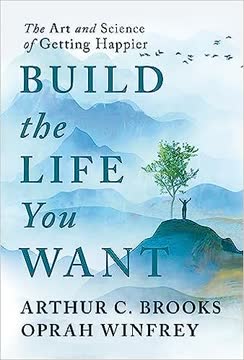
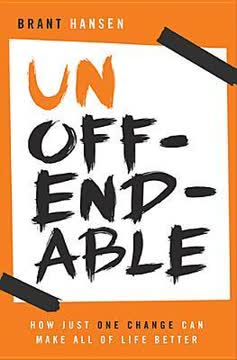
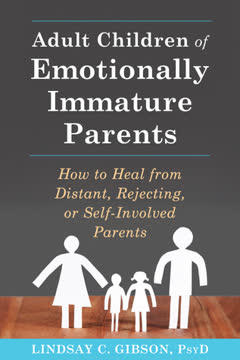
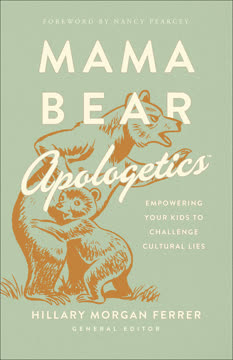

Download PDF
Download EPUB
.epub digital book format is ideal for reading ebooks on phones, tablets, and e-readers.
